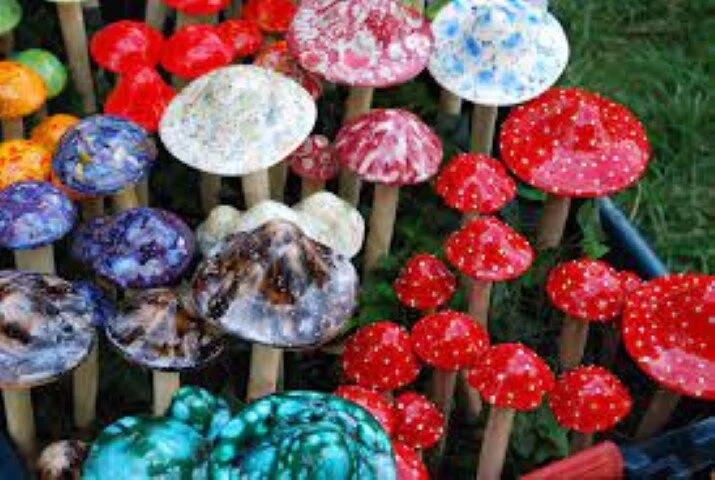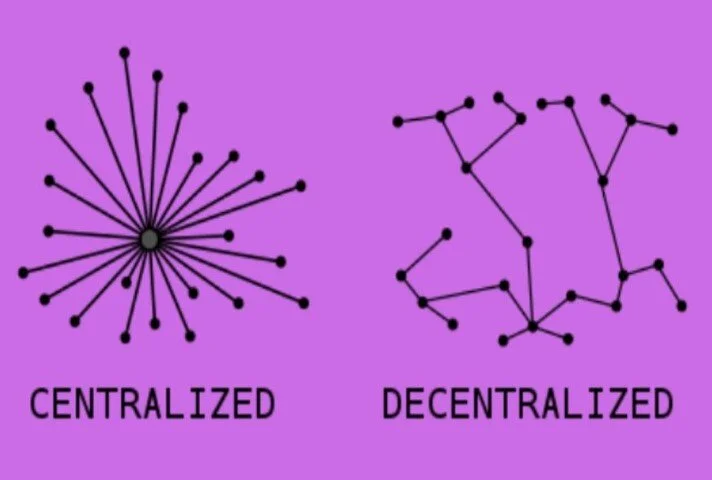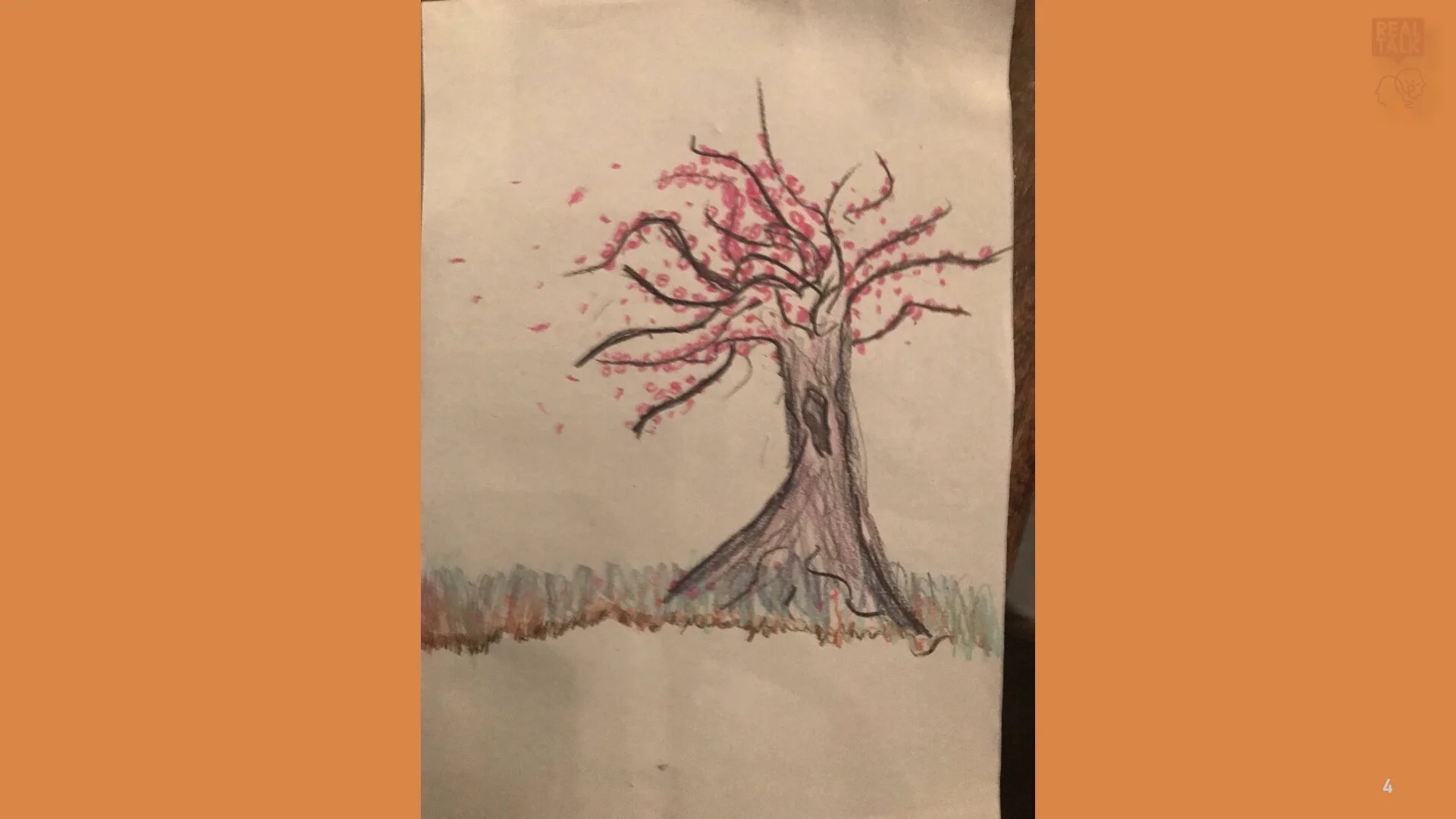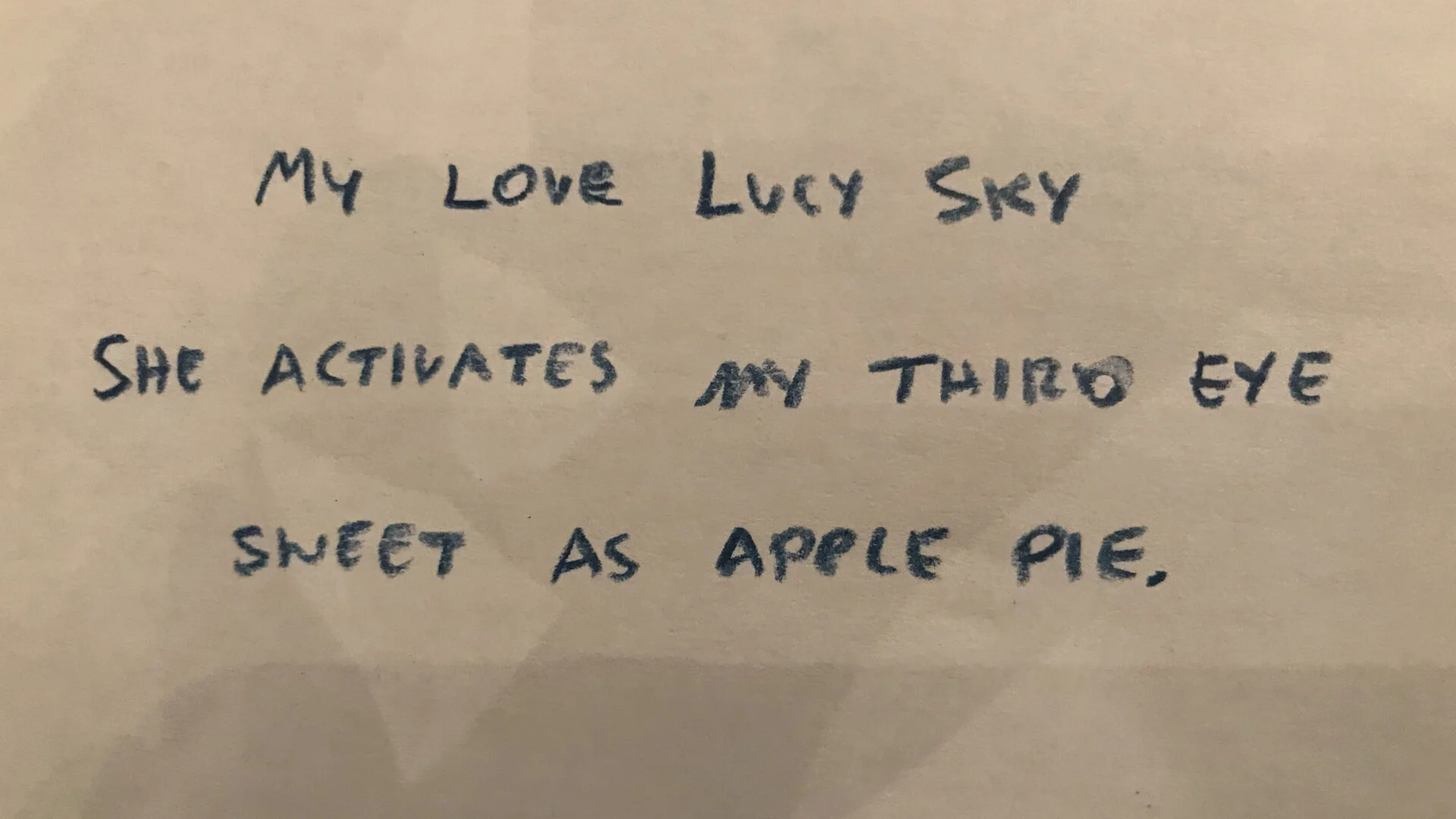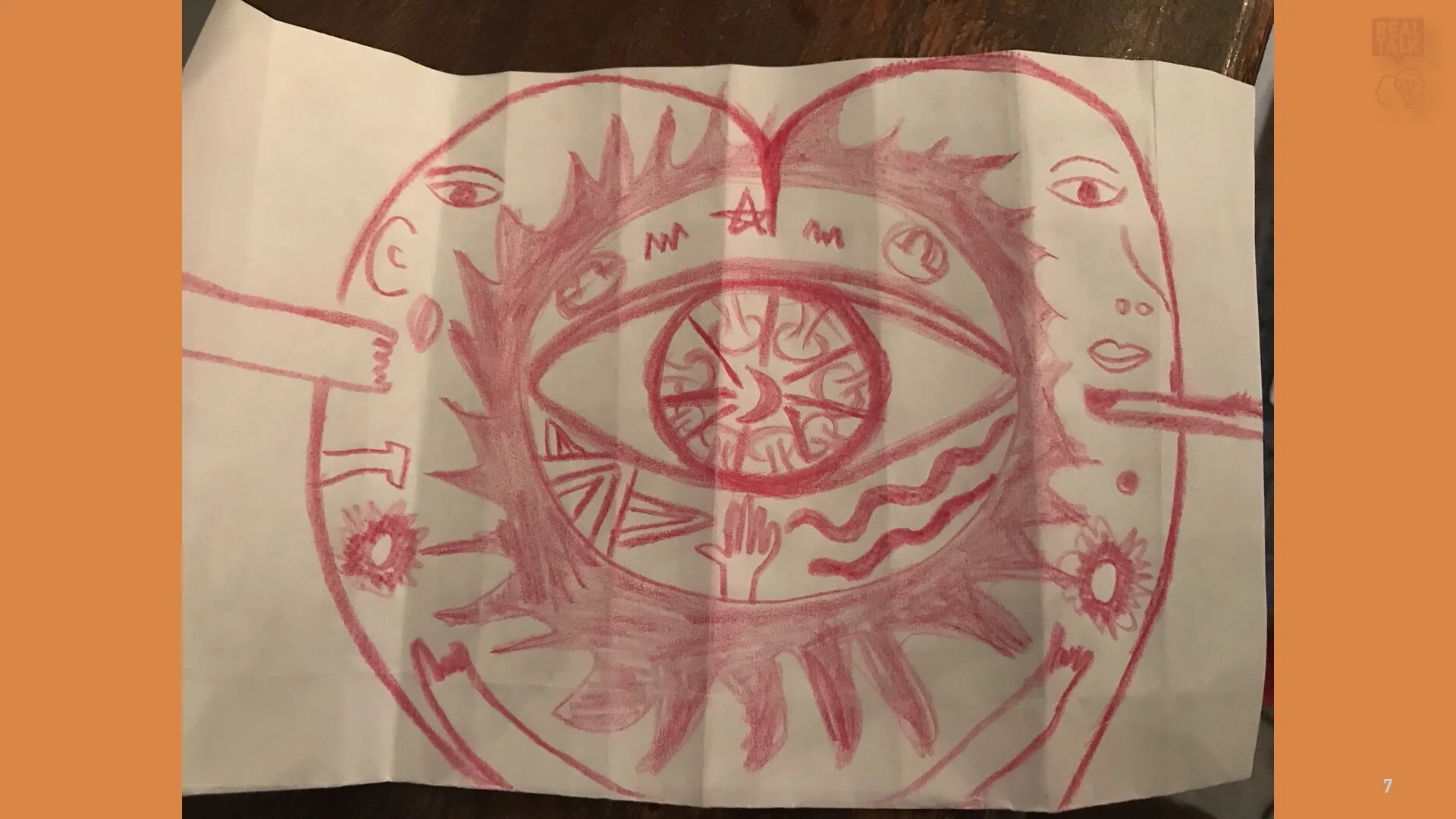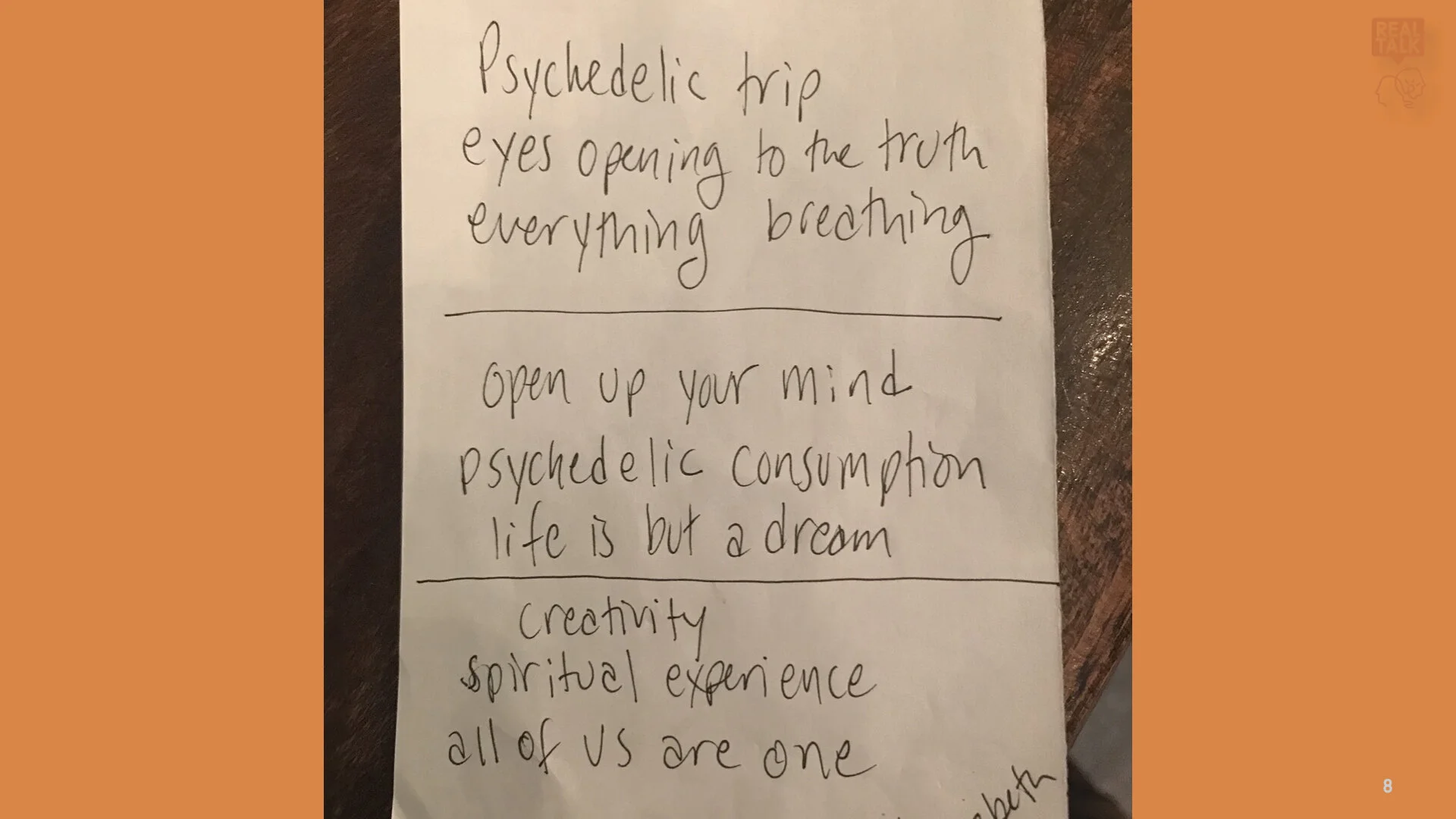Psychedelics
Real Talk Philosophy Artwork


Introductory Discussion Questions
What are psychedelics?
Have you ever experienced psychedelics? What was it like?
Do you believe people should or should not be allowed to use psychedelics?
What’s the strongest argument against your stance?
Have you or a friend ever experienced a “bad trip”?
Can psychedelics cause “mystical experiences”? What is a “mystical experience”?
What are Psychedelics?
Definitions
“drugs (especially LSD) that produce hallucinations and apparent expansion of consciousness.” - Oxford English Dictionary
“Chemicals that reliably induce states of altered perception, thought, and feeling that are not experienced otherwise except in dreams or at times of religious exaltation.” - Jerome Jaffe, who was the drug Czar of the United States under Richard Nixon
Etymology of psychedelics
The word psychedelic comes from the greek ψυχή, psyche, meaning “soul,” or “mind.” and δηλείν, delein, meaning “to manifest.”
A simple etymological definition could be “mind-manifesting” or “soul-manifesting.”
Alternative academic names
The word “psychedelics” was coined by a British psychiatrist named Humphry Osmond in 1956 and championed by Timothy Leary. Psychedelic is a term that has been popular since the 1950s. But there are several terms that mean essentially the same thing.
Psychotomimetics was a preferred term in the earliest days of LSD research. Researchers believed that LSD could be used to help us learn more about psychosis by inducing psychotic states in volunteer subjects using LSD. They believed that LSD could reliably mimic the experience of psychosis. But this was later abandoned after discovering marked differences in psychedelic and psychotic experiences.
In the late 1970s, the term Entheogen was preferred, literally translating to “God within” or “generating God.” This new name was in an attempt to escape the negative connotations of the term psychedelics had in the 1960s.
You have likely heard the term Hallucinogen. This term, though, has been mostly abandoned in academic communities because it suggests that the primary function of psychedelics is to produce hallucinations, but there is much more happening.
Classical Vs. Non-Classical
We will focus on the so-called “Classical Psychedelics” including Psilocybin, DMT, 5-MeO-DMT, Mescaline, Ayahuasca, and LSD, though there are many many substances considered to be psychedelics. These “Classical Psychedelics” are distinguished from their modern, synthetic alternatives because they are naturally occurring, and they accomplish their effects primarily by “antagonizing” (or stimulating) serotonin receptors in the brain, specifically the serotonin 5-hydroxytryptamine (5-HT) 2A receptors.
How Do Psychedelics work?
All classical psychedelics work by antagonizing (or stimulating) the 5-HT2A Serotonin Receptors in our brains. There are 15 different kinds of serotonin receptors in our brains, and this is just one. Chemical interactions in the brain are extremely difficult to visualize, but this is a computer illustration of the psilocybin molecule being accepted by the 5-HT2A receptor.
When the psychedelic molecule is accepted by the 5-HT2A serotonin receptor, we see many things happen. Perhaps most importantly, we see a rapid increase in activity all over the brain! But we also see a marked decrease in activity in the Default Mode Network. Although an older model of the brain focused on individual sections of the brain, modern psychology and neuroscience now focus on networks in the brain, and the way that regions pass information to one another, the Default Mode Network (DMN) was only recently discovered in 2001. It has been described as the “CEO” or “orchestra conductor” of our brains because other networks of the brain communicate via the Default Mode Network. The key structures making up the default mode network are the medial prefrontal cortex, the posterior cingulate cortex, the inferior parietal lobule, the lateral temporal cortex, the dorsal medial prefrontal cortex, and the hippocampus formation. (Randy et al., 2008)
Agitation of serotonin receptors by psychedelics
The classical psychedelics closely resemble Serotonin; they’re doppelgängers. We can see the similarities between the serotonin molecule and the DMT, Psilocin, and psilocybin molecules in the diagram below. This similarity might just be a total, random accident; or this may be the offspring of evolution, or this may be divine. There are many different serotonin receptors. Classic psychedelics are received by the 5-HT2A serotonin receptor. The 5-HT2A receptors are “found in large numbers in the… cortex, the outermost, and evolutionarily most recent, layer of the brain.” Agitation of the 5-HT2A receptor decreases activity in the DMN.
Mental Constructs
The Default Mode Network plays a key role in the formation of mental constructs. These mental constructs are shortcuts to help us more efficiently navigate the world around us. They save us energy. For example, we’ve all probably seen thousands of trees. We know that trees pose no threat, and, for most of us, we know that they won’t be used as a tool. And we know that nearly all trees are similar, interchangeable. We do not have to see the bark, the leaves, the branches, the shadows, the mold, the scars, etc. to know that this thing is a tree, and this would require a lot of brain power. Instead, when we look at a tree, our brains do not analyze the details of this one particular tree. Instead, the moment our brains recognize that this thing we’re looking at is a tree, our brains create a mental construct of a “tree.” This is a shortcut the brain has developed with the Default Mode Network. When young children, on the other hand, see a tree for the first several times, they haven’t yet had the chance to develop a Mental Construct of “Tree” and they, therefore, see the details. So, the experience that you had of looking at a tree as a child was probably extremely different than the experience you now have. But psychedelics, by reducing activity in the default mode network, restore this “child’s brain.”
This Adult Brain, Child’s Brain comparison is used often in psychedelic research. Adult Brains have the ability to narrowly focus attention on a single goal. There are less errors this way. Processes take less time and less energy. But the adult brain is also less creative, less able to think “outside the box.” And sometimes too rigid for unique problem-solving.
The Child’s Brain, in comparison, is more widely diffused. It can take in information from virtually anywhere in the field of awareness. This process causes more errors. Process take more time and more energy. But the child’s brain is also more creative, more able to think “outside the box.” And better suited for unique problem-solving. Now, both children and adults on psychedelics rely more on novel thinking than on applying known information to processing sensory information, when compared to sober adults. Also, children are far better at some problem-solving tasks, when “thinking outside the box” is required.
For example, in a 2000 study, researcher Alison Gopnik gave children a toy box that lights up and plays music when a certain combination of blocks is placed on top of it. When Gopnik’s team programmed the box to only play music when two blocks are placed on it, four-year-olds figure it out much faster than adults. The four-year-olds tested more "far-out" hypotheses than adults.
Some psychedelic researchers draw a useful distinction between the "spotlight consciousness" of adults and the "lantern consciousness" of young children.
In his 2018 book How to Change Your Mind, Michael Pollan writes :
“Baby consciousness is so different from adult consciousness as to constitute a mental country of its own, one from which we are expelled sometime early in adolescence. Is there a way back in? The closest we can come to visiting that foreign land as adults may be during the psychedelic journey.”
The “Me Network”
Michael Pollan goes on to write that “The default mode network appears to play a role in the creation of mental constructs or projections, the most important of which is the construct we call the self, or ego. This is why some neuroscientists call it ‘the me network’”. “The me network” is most active when not doing anything particular at all
"A better way to suppress uncertainty and entropy in the human brain emerged with the evolution of the default mode network, Carhart-Harris contends, a brain-regulating system that is absent or undeveloped in lower animals and young children. Along with the default mode network, “a coherent sense of self or ‘ego’ emerges” and, with that, the human capacity for self-reflection and reason. Magical thinking gives way to “a more reality-bound style of thinking, governed by the ego.” Borrowing from Freud, he calls this more highly evolved mode of cognition “secondary consciousness.” Secondary consciousness “pays deference to reality and diligently seeks to represent the world as precisely as possible” in order to minimize “surprise and uncertainty (i.e. entropy).” -How to Change Your Mind
Decentralization
Another result of decreased activity in the default mode network is decentralization. Under normal circumstances, all communication between networks in the brain passes through the Default Mode Network. The communication is centralized and at its center is the DMN. But, through decreased activity in the DMN, the brain is more decentralized, networks of the brain communicate to one another without passing through the DMN. (Perhaps one reason why so many psychonauts are also into cryptocurrency) And this may be why people on psychedelics often report experiencing synesthesia. Synesthesia is “a condition in which one sense (for example, hearing) is simultaneously perceived as if by one or more additional senses such as sight.” Because networks in the brain are communicating with one another independently, some sensory perception communication networks may get criss-crossed.
And due to this decentralization, we also find increased brain entropy. “Entropy measures the variety of configurations possible within a system, and recently the concept of brain entropy has been defined as the number of neural states a given brain can access.” The adult brain is more ordered, more rigid, and less malleable. The child brain is less ordered, less rigid, and more malleable. Researchers have found using fMRI that high entropy is positively correlated with general intelligence. Psychedelics decrease activity in the DMN, and decreased activity in the DMN results in high entropy. As said by Michael Pollan, by deactivating the DMN, psychedelics “loosen the ego’s grip on the machinery of the mind.”
The experience of taking psychedelics is often likened to a ski slope. Through years of repeatedly going down the slope in the same way, the “grooves” in the snow have gotten deeper and deeper. Even if a skier wants to go a different direction, they’re forced to take the same path because the grooves are just too deep. Traditional psychedelics act like a blizzard, covering the tracks, so new tracks can be discovered and formed. This may be why people on psychedelics often report experiencing synesthesia. Synesthesia is “a condition in which one sense (for example, hearing) is simultaneously perceived as if by one or more additional senses such as sight.” Because networks in the brain are communicating with one another independently, some sensory perception communication networks may get criss-crossed.
Many activities decrease DMN Activity
Psychedelics
Meditation
Breathing exercises (e.g. holotropic breathwork)
Sensory deprivation
Fasting
Prayer
Overwhelming experiences of awe
Extreme sports
Near-death experiences
So, psychedelics decrease activity in the default mode network, resulting in the ability to see the world clearly instead of relying on mental concepts. But there are many other activities that result in the reduction of activity in the Default Mode Network.
Discussion Questions
Should psychedelics be legal? Which ones? At what age?
Should any drugs be illegal?
Do psychedelics make a person smarter?
Is “baby consciousness” preferable to “adult consciousness”? Why or why not?
Is there a “right way” and a “wrong way” to take psychedelics?
Is what’s experienced on psychedelics more or less real than what’s experienced in sober-reality?
Safety Concerns
Through the 1960s and beyond, there were some real horror stories related to psychedelic use. Johns Hopkins University, in addition to a few other institutions, have been granted permission to study the safety of psychedelics. And here’s what they’ve found. First, researchers now consider psychedelics to be non-addictive. The intensity of the psychedelic trip dissuades most people from wanting to repeat the experience quickly. Also, the human body quickly builds tolerance to LSD, meaning that if you trip today, tomorrow you will need much more LSD, and more the next day. The molecular makeup of LSD and psilocybin are so similar, cross-tolerance occurs between them. Meaning that if you trip on LSD today, you’ll need many more psychedelic mushrooms tomorrow. Attempts to train animals to self-administer hallucinogens, an animal model that can predict abuse liability, have generally been unsuccessful. When a rat is given a water mixed with cocaine, it will continue drinking the cocaine water until it dies. When a rat is given water mixed with LSD, it drinks the LSD water once, then never drinks it again. Moreover, psychedelics are considered “anti-addictive,” meaning they can be used to counter addictions to other substances like alcohol, nicotine, opiates, etc.
Lethal Overdose
There are no known deaths due to overdose from LSD, psilocybin, or mescaline. There have been two cases of reported deaths caused by psilocybin overdose, but researchers argue that there’s too little information to rule-out cross-contamination. However, psychedelic-related deaths from accidents and reckless behavior do sometimes occur. In 1974, 8 people snorted inordinate amounts of LSD, after mistaking it for cocaine. The developed comatose states, hyperthermia, vomiting, gastric bleeding, and respiratory problems. Despite this, all survived with hospitalization. Now, let’s compare this to alcohol-related deaths. Globally, there are 3 million alcohol-related deaths and 350,000 opioid-related deaths each year.
Psilocybic mushroom lethal overdose
Researchers have recorded psilocybin lethal overdose in rats. They extrapolated this rat lethal overdose, and calculated that for a 60 kg (130 lb) human, the lethal overdose would likely be 1.7 kg (or 3.7 lb) of dried mushrooms, which is 17 kg (or 37 lb) of fresh mushrooms. Lethal dose of pure psilocybin, extrapolated to be 6g which is 1000x the effective dose of 6mg. Major harm from mis-identification. Annual deaths unknown
A lot of the reports of serious harmful effects of taking psychedelics are from case reports rather than during controlled studies. There were also some case studies where people thought they had taken a psychedelic, such as LSD, but had actually taken a different drug. E.g. a husband and wife took what they thought was LSD, leading to the wife’s death. The media blamed the death on LSD, but the autopsy revealed that they had actually taken 25b-NBOMe.
Side effects
Hallucinogens aren’t considered addictive and don’t appear to cause organ damage or neurotoxicity. However, they are associated with some mild side effects such as dizziness, blurred vision, weakness tremors while they are active, but these effects are transient. They can also increase blood pressure so there is the potential for harm in people with existing high blood pressure concerns. The fatal dose of LSD is 1000x larger than the effective dose. Compared to Heroin whoes fatal dose is only 5 times the effective dose. Hence,it is virtually impossible to overdose on LSD.
Acute, short, and long-term effects
Studerus et al. (2010) analyzed acute, short-, and long-term subjective effects of psilocybin in healthy humans. Again, using pooled raw data from eight double-blind placebo-controlled experimental studies conducted between 1999 and 2008, their analysis included 110 healthy subjects who had received between one and four oral doses of psilocybin (45–315 μg/kg body weight). Psilocybin dose-dependently induced profound changes in mood, perception, thought, and self-experience, but most subjects described the experience as pleasurable, enriching, and nonthreatening. Acute adverse reactions were characterized by strong dysphoria and/or anxiety/panic, but occurred only at the two highest doses of psilocybin in a relatively small number of subjects. All acute adverse drug reactions were successfully managed through interpersonal support and did not require psychopharmacological intervention. Follow-up questionnaires indicated no subsequent drug abuse, persisting perception disorders, prolonged psychosis, or other long-term impairment of functioning in any of the subjects. The results indicate that the administration of modest psilocybin doses to healthy, high-functioning, and well prepared subjects in the context of a carefully monitored research environment carries an acceptable level of risk.
There has been one recorded LSD overdose. This was Tusko, a male Indian elephant at the Oklahoma City Zoo. On August 3, 1962, researchers from the University of Oklahoma injected Tusko with 297 mg of LSD. This is nearly three thousand times the human recreational dose. Within 5 minutes, Tusko collapsed to the ground. 1hr 45min later, Tusko died. It is disputed whether it was the LSD or the tranquilizer that caused Tusko’s death.
Mental health
Modern studies have more stringent policies when it comes to participation selection in psychedelic trials. Hence, it is difficult to scientifically prove the effects on disorders such as bipolar, schizophrenia or other psychotic disorders. Some of the research pre-renaissance found some adverse mental health effects. At rates of between 0.4 and 1.2 per 1000 research participants have shown psychotic reactions lasting more than 48 hours in some 1960’s studies. When psychedelics are taken without adequate preparation and when surroundings are anxiety-provoking—either physically uncomfortable or emotionally intimidating—the psychedelic experience likely results in fear, a prolonged sense of dread, or full panic. Using 2001–2004 data drawn from the National Survey on Drug Use and Health (NSDUH), Krebs and Johansen (2013) recently evaluated possible associations between lifetime use of psychedelics and current mental health in the U.S. adult population. In a large sample of respondents, 13.4% reported lifetime psychedelic use. No significant associations were found between lifetime use of any psychedelic or past-year use of LSD and increased rate of any mental health outcome. Surprisingly, in several cases, use of psychedelics was associated with a lower mental health problem rate.
There is no evidence that psychedelics cause long-term negative effects to mental health. Using 2001–2004 data drawn from the National Survey on Drug Use and Health (NSDUH), Krebs and Johansen (2013) recently evaluated possible associations between lifetime use of psychedelics and current mental health in the U.S. adult population. In a large sample of respondents, 13.4% reported lifetime psychedelic use. No significant associations were found between lifetime use of any psychedelic or past-year use of LSD and increased rate of any mental health outcome. Surprisingly, in several cases, use of psychedelics was associated with a lower mental health problem rate. Today, clinical studies screen-out anyone at risk of bipolar, schizophrenia, and other psychotic disorders. Modern studies have more stringent policies when it comes to participation selection in psychedelic trials. Hence, it is difficult to scientifically prove the effects on disorders such as bipolar, schizophrenia or other psychotic disorders.
Bad trips
A study at Johns hopkins in 1993 collated the experiences of people who had reportedly had ‘bad trips with psilocybin’. They found that setting played a significant part of this with only 2.1% having been in what would have resembled a controlled clinical environment. 39% of participants reported the bad trip as in their top 5 most challenging experiences of their lifetime. Very interestingly though, 34% of participants still ranked their bad trips as in their top 5 meaningful life events. 11% reported putting themselves at risk of physical harm. 7.6% had sought treatment for one or more psychological symptoms which they attributed to the challenging psilocybin experience. 2.6% reported behaving in a aggressive manner, 2.7% got medical help, 84% said they had benefited from the challenging parts, and 46% said they would repeat the experience.
SSSD
There are lots of reports of people hurting themselves while on psychedelics. What has been commonly expressed when reading about the use of psychedelics is the importance of SSSD: Set-up, setting, safety, and dosage. If these conditions are suboptimal, it is possible that negative side effects could occur.
Therapeutic uses of psychedelics
Treating Nicotine Addiction
In the last decade, researchers have also found some very exciting uses for psychedelics. First, psilocybin has been incredibly effective at treating nicotine addiction. In a 2014 study combining cognitive behavioral therapy (CBT) with psilocybin, Roland Griffiths and his team found that 80% of patients still abstained from cigarettes after 6 months. This is compared to less than 35% after 6 months using CBT alone, without psilocybin. “Subjects were 15 healthy nicotine-dependent smokers who had made multiple unsuccessful attempts to quit smoking. Subjects received weekly cognitive-behavioral therapy, with a psilocybin treatment session at week 5. Weekly therapy sessions continued, with a second dose of psilocybin at week 7 and a third optional dose at week 13. At the 6-month follow-up, 12 of 15 subjects (80%) showed abstinence. This smoking cessation rate exceeds the typical (<35%) rates observed in other behavioral or pharmacological therapies. These very promising results certainly argue for further investigation of this approach… abstainers scored significantly higher on a measure of psilocybin-occasioned mystical experience. There were no significant differences found between groups in general intensity of drug effect, suggesting that mystical-type subjective effects, rather than the overall intensity of drug effect, were responsible for smoking cessation. Smoking cessation outcomes were significantly correlated with measures of mystical experience on drug session days. The authors propose a mediating role for mystical experience in psychedelic-facilitated addiction treatment.”
Treating Alcoholism
Psychedelics have also shown to be effective at treating alcoholism. In fact, Bill Wilson, the founder of Alcoholics Anonymous, advocated for LSD therapy before it became illegal. In 2019, researchers collated the experiences of 343 online participants who suffered from Alcohol Use Disorder (i.e. alcoholism). After one year, 83% no longer met the criteria for Alcohol Use Disorder. In addition to getting people off alcohol, subjects also report that the symptoms of alcohol withdrawal were much less severe than the times the participants tried to quit without the aid of psychedelics. There was significant research into the treatment of alcohol dependence and LSD in the 1960/70’s. After being treated by LSD himself, Bill Wilson, founder of Alcoholics Anonymous was an advocate for the use of LSD in his program. Having found his own path through the ‘Belladonna Cure’ programme in the 30’s he found that the experience of LSD was akin to the spiritual realisations that brought him his sobriety, without the side effects of belladonna. (Markel, 2010)
However, a meta-analysis of the studies conducted during this time (total of 536 patients across 6 randomised control trials) found statistically significant short-term benefits which were not maintained at 12 months. The authors of this meta-analysis do however note that cautious concussions might not be generalisation from the 1960’s to today’s clinical populations (Krebs & Johansen, 2012). In actual fact, there seems to be a greater efficacy in modern research with Psilocybin and the reduction of alcohol dependence and with longer term effects (Bogenschultz et al., 2015).
One participant wrote: “It allowed me to feel whole again and forced me to reconnect with emotional trauma. It gave me insight into the nature of addiction and how it enslaves us — physically, mentally, and spiritually. Addiction numbs us to any kind of growth as a human being.”
Treating Depression
Furthermore, psychedelics have been extremely helpful in fighting depression. Roland Griffiths in 2006 and 2008 found significant increases in positive attitudes, mood, and social effects following psilocybin sessions in healthy patients. The biggest finding of which studies was that these effects continued in a 14 month follow up and the participants rated their experience as one of the most meaningful experiences of their lives. One possible explanation for this is that DMN overuse has been linked to unhappiness, and psychedelics reduce activity in the DMN.vAnother explanation is that a strong sense of self implies a strong sense of separation from others. Carhart-Harris also found that after a high-dose single sitting treatment with Psilocybin, patients with moderate to severe depression found a marked reduction in depressive symptoms after 1 week and 3 months following treatment. She found that psilocybin is much faster acting than traditional depression medications. This means that psilocybin may be used to offer swifter support for suicidal thoughts and self-harming behavior. After a psilocybin treatment, 100% of patients with treatment-resistant depression showed a decrease in depressive symptoms 1-week post-treatment, 47% at 5 weeks after treatment.

